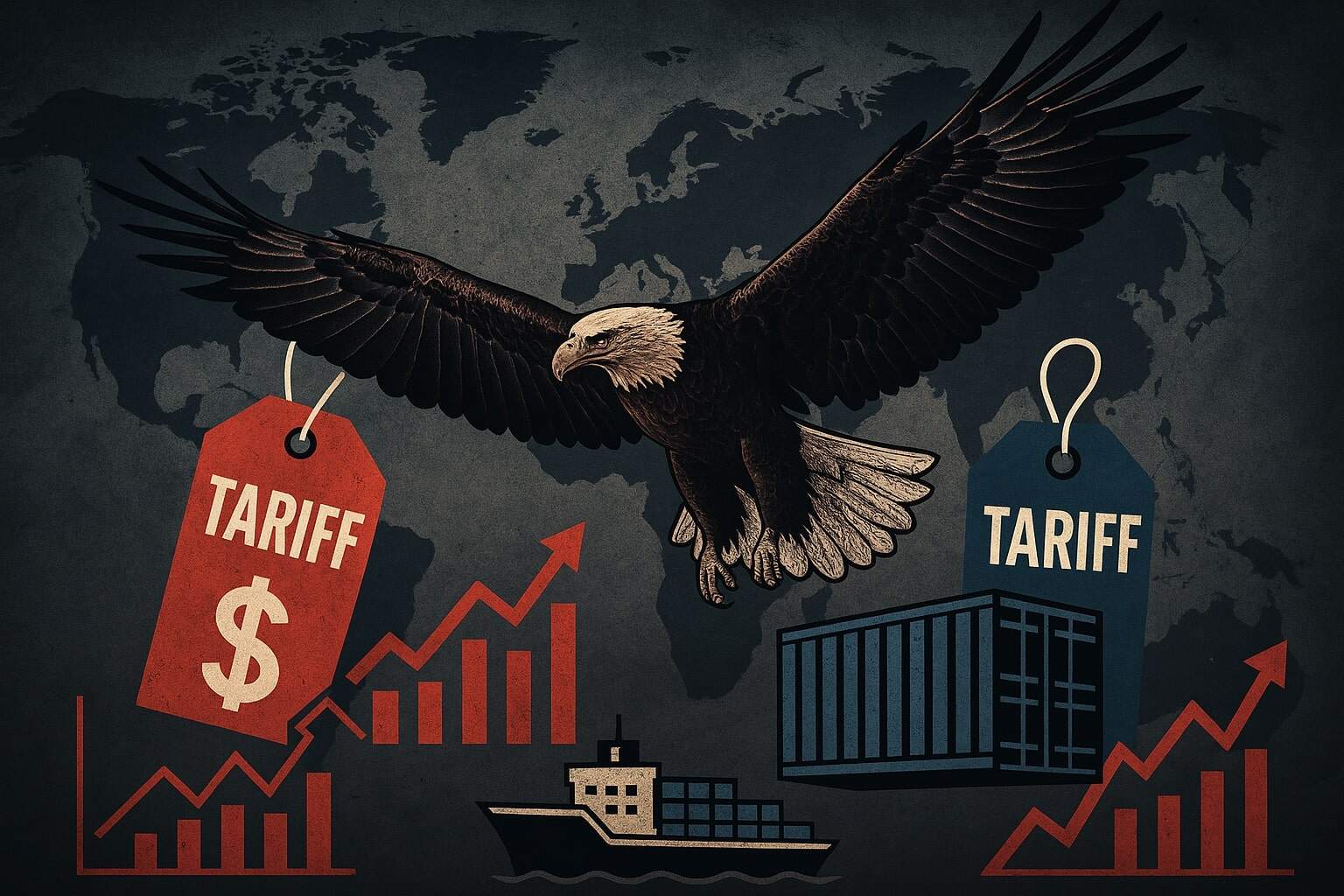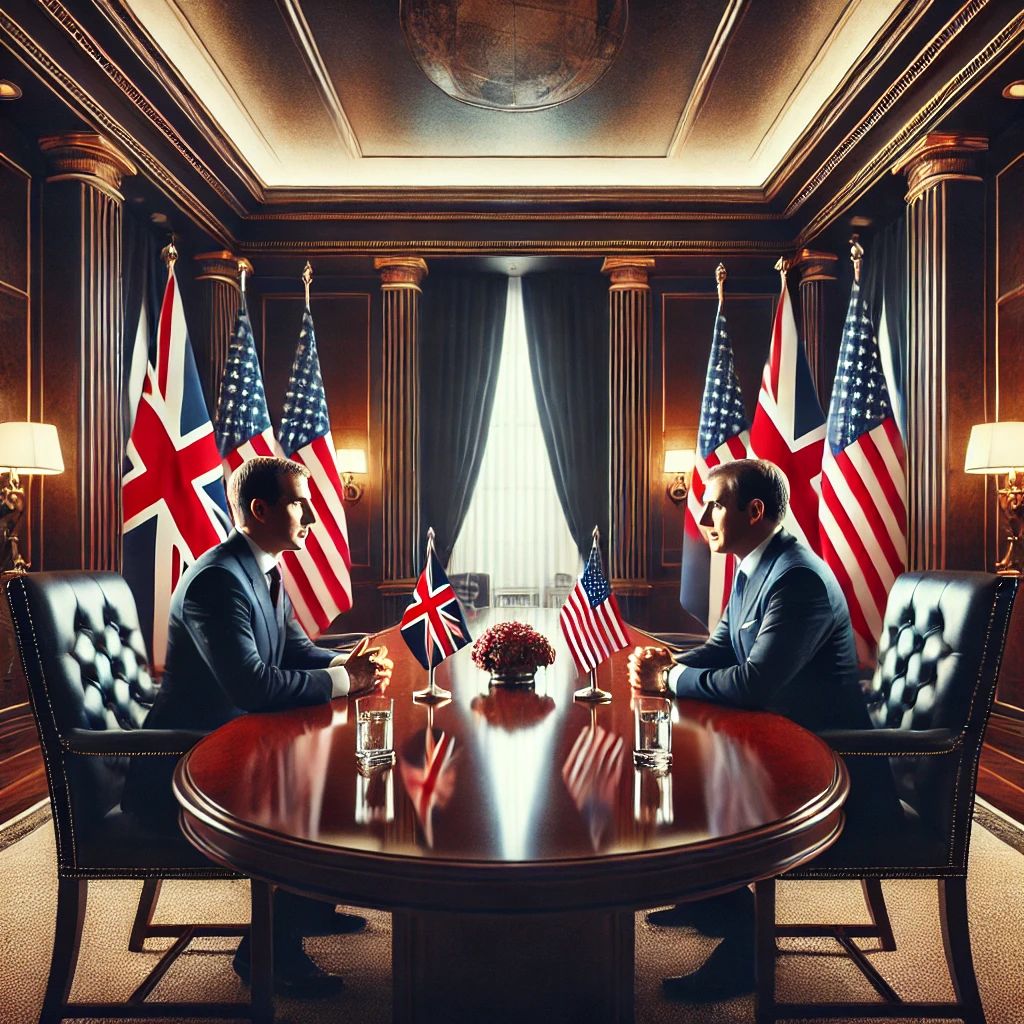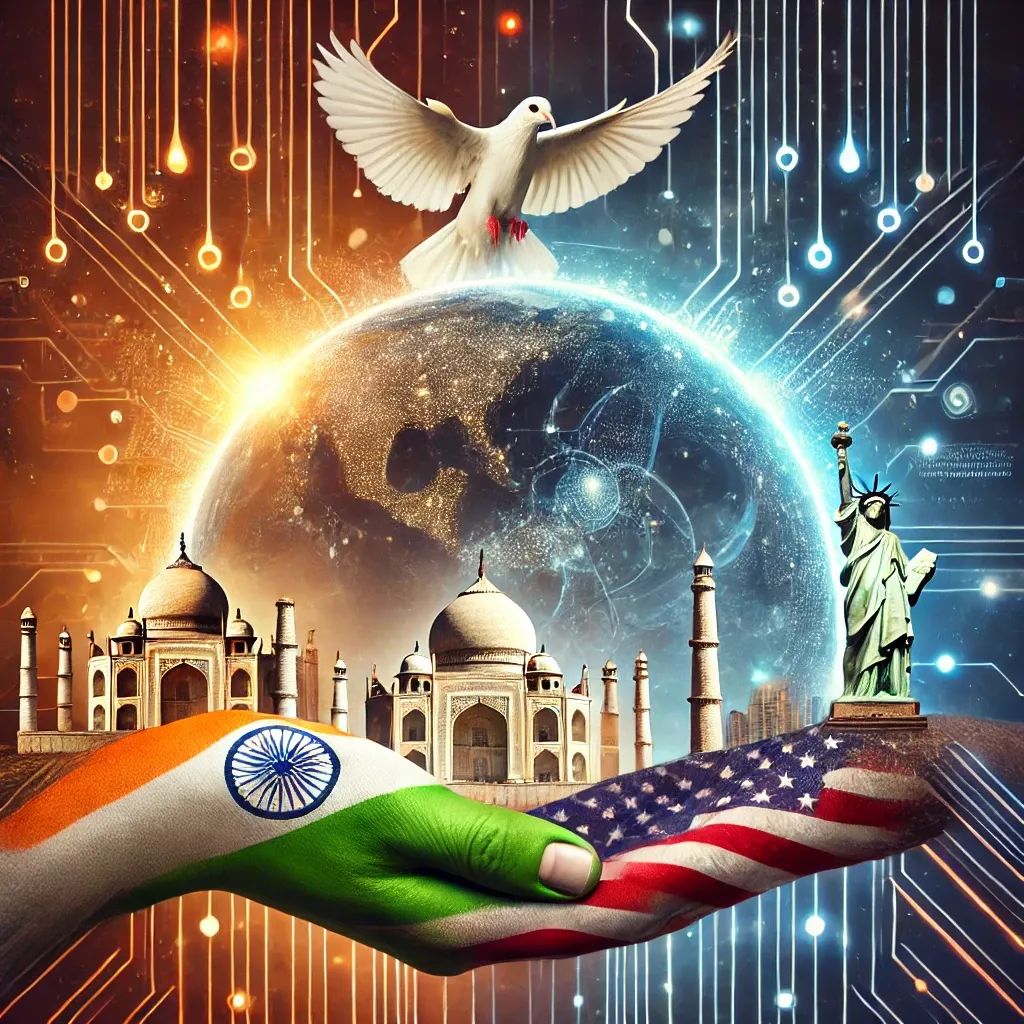In recent years, the United States has reasserted its economic nationalism by imposing a series of sweeping tariffs that have sent shockwaves across global markets. Once the champion of free trade and globalization, Washington’s new approach marks a significant departure from decades of economic orthodoxy. This comprehensive analysis examines the geopolitical underpinnings of these tariff policies, their immediate and long-term effects on international relations, and a forecast of what may lie ahead if this trend continues.
I. The Genesis of the Tariff Wave
A. Historical Shifts and the Rise of Protectionism
Historically, the United States helped build the post–World War II international order based on liberalized trade and open markets. However, the past decade has seen a dramatic reversal of these principles. The reintroduction of tariffs recalls an era when protectionism was the norm rather than the exception. Critics and supporters alike point to the legacy of economic dislocation—the “China Shock” and deindustrialization in key regions—as the catalyst that has emboldened Washington to recalibrate its trade policy.
President Donald Trump’s tariff strategy has drawn explicit parallels with pre-1913 US policies, harking back to a time when tariffs were the primary source of government revenue and a tool for safeguarding domestic industries. By rejecting the notion of comparative advantage—a cornerstone of modern economic theory—the US is effectively challenging the liberal trade regime. Instead of promoting a level playing field, the tariffs aim to correct perceived trade imbalances by penalizing countries with significant surpluses against the United States.
B. The Policy Blueprint: Scope and Rationale
The tariff structure is multifaceted. A baseline 10% tariff applies to nearly all imported goods, with higher rates—ranging from 20% to 54%—targeted at specific nations and sectors. Key industries, such as automotive and steel, have been hit hard, and even iconic British brands like Jaguar Land Rover have felt the impact, with export shipments to the US being paused as companies reassess their strategies. Meanwhile, emerging economies like India find themselves caught in a web of complex trade relations, where tariff differentials among competitors could either serve as an opportunity or exacerbate existing structural challenges.
The US administration’s rationale is framed as a defensive measure: a necessary recalibration of trade relationships that have long disadvantaged American workers and industries. The tariffs are presented as a tool to incentivize domestic manufacturing, reduce the trade deficit, and force a renegotiation of what the administration deems unfair trade practices. This narrative, however, has sparked both domestic debate and international controversy.
II. Global Reactions and the Geopolitical Chessboard
A. The Western Response: Europe and the United Kingdom
Europe has been one of the most vocal critics of the US tariff imposition. The European Union’s leadership, with figures like Ursula von der Leyen and Emmanuel Macron, has decried the tariffs as “a major blow” to the world economy. In many European capitals, the tariffs are seen not merely as an economic adjustment but as an assault on the principles of multilateral trade cooperation.
The United Kingdom, already navigating a post-Brexit reality, finds itself in a particularly precarious situation. With British exports—especially in the automotive and luxury goods sectors—being a significant part of its economy, the new tariffs threaten to undermine trade flows and exacerbate existing economic uncertainties. Prime Minister Sir Keir Starmer’s government has vowed to protect domestic industries through a mix of industrial policies and state intervention. While the UK is taking a measured stance, there are growing concerns about the long-term implications for global trade rules and market stability.
B. Asian Dynamics: The Case of India and China
Asia’s response to the US tariff wave is multifaceted. China, which faces the highest cumulative tariff rates, has been quick to promise retaliatory measures. Chinese policymakers argue that these tariffs are a punitive measure that undermines the rules-based international order. In turn, China’s countermeasures are designed not only to protect its own economic interests but also to reassert its influence in the global trade arena.
India, on the other hand, occupies a unique position. With a tariff rate of around 26–27% on its exports to the US—significantly lower than those imposed on China, Vietnam, and other Asian competitors—India is seen by some as having an opportunity to capture a larger share of re-routed trade. Yet, this potential is tempered by India’s longstanding structural challenges: underdeveloped infrastructure, bureaucratic inefficiencies, and a regulatory environment that is not fully conducive to rapid industrial expansion. The Indian government faces a delicate balancing act, attempting to navigate between diplomatic engagement with Washington and domestic economic reforms that could bolster its competitive edge.
C. North American and Latin American Perspectives
North America has not been immune to the ripple effects of the tariff imposition. While Canada and Mexico benefit from existing trade agreements and exemptions in some cases, US tariffs have led to retaliatory measures—particularly in the automotive sector. Canadian industries, which have traditionally enjoyed robust trade with the United States, now face the double-edged sword of higher import duties and an uncertain policy environment.
In Latin America, countries like Brazil have responded with legislative measures designed to counterbalance the US tariffs. Brazil’s Economic Reciprocity Law, for instance, is a direct response to what it perceives as an unfair imbalance in global trade. Latin American governments are increasingly wary of being pawns in a larger geopolitical contest, and many are exploring ways to bolster regional trade cooperation as a counterweight to American unilateralism.
III. The Ripple Effects: Economic, Political, and Social Implications
A. Disruption of Global Supply Chains
One of the immediate consequences of the tariff imposition is the disruption of global supply chains. Major industries—most notably automotive manufacturing—have had to rapidly adapt by shifting production sites or reconfiguring supply routes. For instance, Japanese automakers like Nissan are contemplating relocating production to the United States to avoid the punitive costs of tariffs. Similarly, European manufacturers are rethinking their export strategies to a market that is increasingly unpredictable.
The fragmentation of supply chains is not limited to the automotive sector. Electronic components, textiles, and even pharmaceuticals are being reshaped by the new tariff regime. This restructuring poses significant challenges for multinational corporations, which must now weigh the benefits of global integration against the risks of a protectionist backlash. In this environment, companies are being forced to adopt a dual strategy: maintain global competitiveness while simultaneously localizing production to mitigate tariff impacts.
B. Domestic Economic Fallout
Within the United States, the ramifications of the tariffs are equally complex. Proponents argue that the measures will rejuvenate American manufacturing and bring jobs back home. However, critics warn of higher consumer prices, supply shortages, and inflationary pressures. The automotive sector provides a poignant example. While tariffs are intended to incentivize domestic production, they also lead to increased costs for American consumers—costs that are likely to be passed on in the form of higher prices for vehicles and auto parts.
The broader economic debate centers on whether the tariffs will ultimately lead to a net benefit for the US economy or whether they will catalyze a self-inflicted wound. Economists point to the risk of a trade war—a scenario in which retaliatory measures by affected countries spiral into a cycle of escalating tariffs. Such an outcome would not only dampen global growth but could also trigger a recession in the United States, with widespread implications for employment, investment, and consumer spending.
C. Political Realignments and National Identity
Beyond the immediate economic effects, the tariffs are reshaping the political landscape. The US’s embrace of protectionism has reinvigorated debates about national sovereignty and the role of government in managing the economy. In political discourse, the tariffs have become a symbol of a broader struggle over the future of globalization. On one side, advocates of free trade argue that openness and global integration are essential for long-term prosperity. On the other, proponents of protectionism contend that safeguarding domestic industries is necessary to protect national interests and ensure economic resilience.
This ideological divide is not confined to the United States. In Europe and Asia, similar debates are unfolding. The rise of populist movements and the reemergence of nationalistic rhetoric are, in part, reactions to the perceived failures of globalization. In this context, tariffs are more than just economic instruments—they are potent political signals that reflect deep-seated anxieties about identity, sovereignty, and the future of the nation-state.
IV. Future Predictions: The Road Ahead in a Tariff-Dominated World
A. Scenario 1: Escalation into a Full-Fledged Trade War
If the current trajectory continues unchecked, one possible outcome is an escalation into a full-blown trade war. As countries retaliate with higher tariffs and restrictive trade policies, global commerce could be driven into a downward spiral. This scenario would be characterized by:
- Increased Tariff Rates: More nations may follow the US example by imposing protectionist measures, leading to a cascading effect.
- Fragmentation of Global Trade Networks: Established supply chains may break apart, replaced by more regionalized and insular networks.
- Economic Contraction: The cumulative effect of higher tariffs could dampen global economic growth, trigger recessions, and exacerbate unemployment.
In this context, the United States risks undermining the very industries it seeks to protect. American companies that rely on international supply chains may face higher production costs and reduced competitiveness abroad. Moreover, consumers could face sustained price increases, while global investor confidence wanes amid mounting uncertainty.
B. Scenario 2: Managed Protectionism and Strategic Realignment
An alternative, albeit less dramatic, future involves a managed approach to protectionism. In this scenario, the US and its trading partners could engage in a series of negotiations aimed at stabilizing the trade environment. Key features of this approach might include:
- Bilateral and Multilateral Trade Agreements: Rather than engaging in tit-for-tat tariff escalations, countries might seek to negotiate new trade deals that account for current economic realities while preserving market access.
- Targeted Industrial Policies: Governments could implement policies designed to bolster domestic industries without resorting to blanket tariffs. This might involve strategic subsidies, investment in infrastructure, and targeted incentives for innovation.
- Revised Global Trade Rules: There is potential for a recalibration of the international trade system, with new rules that reflect the changing geopolitical landscape. Institutions like the World Trade Organization could be reformed to better address the challenges of modern trade dynamics.
This scenario suggests that while protectionist measures may persist, they could be tempered by strategic diplomacy and economic pragmatism. In such a world, the US might retain its competitive edge while also contributing to a more stable global trade order—albeit one that is markedly different from the post–World War II consensus.
C. The Impact on Emerging Economies
For emerging economies, the continuation of US tariffs presents both challenges and opportunities. Nations such as India have the potential to capture market share as competitors face steeper trade barriers. However, the structural challenges inherent in these economies—such as inadequate infrastructure and regulatory inefficiencies—must be addressed for such opportunities to be fully realized.
Emerging markets might experience a dual trend: on one hand, increased tariffs could serve as a catalyst for domestic reforms and industrial modernization; on the other, these same tariffs could exacerbate existing vulnerabilities if governments fail to implement the necessary changes. The long-term prospects for these countries will depend on their ability to adapt to a new global trade environment that is less about seamless integration and more about strategic resilience.
D. The Role of Technology and Innovation
Another factor that could shape the future of tariffs and global trade is the accelerating pace of technological innovation. Advances in automation, artificial intelligence, and digital technologies are already transforming the manufacturing landscape. As companies invest in high-tech production methods, the reliance on global supply chains may diminish. This could, in turn, reduce the economic rationale for imposing high tariffs as companies become more self-sufficient.
However, technology is a double-edged sword. While it offers the promise of enhanced productivity and reduced dependence on foreign suppliers, it also brings with it challenges related to workforce displacement and the need for robust regulatory frameworks. The interplay between technological innovation and tariff policy will be a critical area to watch in the coming years, as nations attempt to strike a balance between protection and progress.
V. Geopolitical Implications: Power, Influence, and the Reordering of Alliances
A. The Erosion of US Global Leadership
The United States has long been seen as the architect of the liberal international order. By imposing unilateral tariffs and challenging established trade norms, the US risks eroding its moral authority and leadership on the global stage. Allies and adversaries alike may perceive Washington’s actions as symptomatic of a broader retreat from global responsibility.
This erosion of influence could have far-reaching consequences. Countries that have traditionally relied on US leadership to mediate disputes and maintain a stable global economic order may begin to seek alternative alliances. The potential emergence of new blocs—whether led by China, the European Union, or a coalition of emerging economies—could redefine the geopolitical landscape for decades to come.
B. Recalibrating Alliances and Strategic Partnerships
In response to the US’s new trade posture, many countries are already rethinking their strategic alliances. Europe’s concerted response, coupled with Asia’s diversified strategies, points to a world in which traditional alliances are no longer guaranteed. Nations may increasingly prioritize bilateral and regional agreements that offer greater predictability and mutual benefit, rather than relying on an unpredictable global order dominated by a single power.
This realignment could also spur the development of new institutional frameworks designed to address the unique challenges of a protectionist era. Regional trade organizations and economic unions might become more influential, providing a counterbalance to unilateral policies and promoting economic cooperation based on shared interests.
C. The Socio-Political Dimension: Nationalism, Identity, and Economic Sovereignty
The political rhetoric surrounding tariffs is deeply intertwined with questions of national identity and sovereignty. In many countries, the move toward protectionism is seen as a reclaiming of economic agency—a way to reassert national control in an increasingly globalized world. However, this narrative is not without its critics. Detractors argue that such policies can lead to isolationism, undermine international cooperation, and ultimately harm the very populations they are intended to protect.
The tension between global integration and national sovereignty is likely to intensify. As governments grapple with the competing demands of economic security and international engagement, the domestic political landscape may become more polarized. Populist movements, which have gained traction by tapping into fears of globalization and economic displacement, could further complicate efforts to forge cooperative solutions on the global stage.
VI. Conclusion: Navigating the Uncharted Future
The imposition of US tariffs represents more than a mere economic adjustment—it is a seismic shift in the geopolitical order. By embracing protectionism and challenging long-standing global trade norms, the United States is catalyzing a period of uncertainty and realignment. The repercussions of this policy shift are multifaceted: disrupting supply chains, realigning international alliances, and prompting deep domestic debates about the nature of economic sovereignty and global leadership.
Looking ahead, the trajectory of US tariff policy will have profound implications. Should the trend toward protectionism continue, the world may face an era marked by heightened trade tensions, the fragmentation of global markets, and the emergence of new geopolitical blocs. Yet, there remains a possibility for a more measured approach—one in which nations work together to craft a new trade order that balances national interests with the imperatives of global cooperation.
The future of global trade, therefore, hinges on the ability of policymakers to navigate these turbulent waters. Balancing domestic priorities with international responsibilities will be key to ensuring that the economic and political fallout from these tariffs does not spiral into a destructive trade war. For emerging economies, advanced industrial nations, and global citizens alike, the challenge will be to adapt to this new landscape—a landscape where economic policies are inextricably linked to geopolitical power, and where the rules of the game are being rewritten in real time.
In this era of tariff tectonics, the choices made by world leaders will not only shape economic fortunes but will also determine the contours of global power for generations to come. Whether the future unfolds as a managed, strategic realignment or devolves into an all-out trade war will depend on the capacity for diplomacy, innovation, and cooperation in an increasingly multipolar world.
As the United States and its global partners navigate this uncharted future, one truth remains clear: the era of unchallenged globalization may be over, but the opportunities for a reimagined global order—one that is more resilient, balanced, and responsive to the needs of all—are just beginning to emerge.




